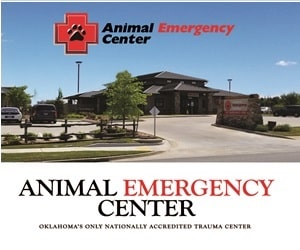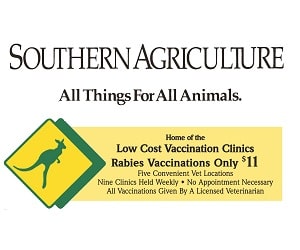Dr. David Bailey of the Tulsa SPCA shares what you need to know
By Kristi Eaton
Just like with humans, man’s best friend needs the proper medications and vaccinations to stay healthy.
Heartworms are a major consideration for your dog.
Dr. David Bailey with the Tulsa Society for the Prevention of Cruelty to Animals (SPCA) said heartworms are actual physical worms—as the name implies—and they live in the heart and vessels leaving the heart, specifically the pulmonary artery, which is the main artery going from the heart to the lungs.
“That’s where they actually prefer to reside and back up into the heart when there is an infestation,” he said.
Heartworms are spread by mosquito bites. “So, mosquitoes bite an infected dog and that infected dog, in addition to the worms living in the pulmonary artery, those worms are making babies, and so the little microscopic baby worms called microfilariae are moving through the blood stream.”
There are some stages the mosquito has to go through to become infectious to the next dog, he said. “So, when that mosquito goes and finds the next dog and injects that baby worm, then that worm will grow and develop into an adult worm.”
The time span from the time an infected mosquito bites a new dog to becoming infected with adult worms is five to six months, he said. “The heartworm test we use only detects the adult worms,” he added. “It’s actually the adult female worm, so your test will be negative until the baby worm grows up into an adult worm, which takes five to six months.”
The heartworm prevention used is taking advantage of the worm’s lifecycle, Bailey explained, because there are several stages that the baby worm goes through. “During the first month, it’s in the stage where it can be killed by our heartworm-prevention medications. … So, they kill those baby worms during that first month, and that’s why you’re able to get that heartworm prevention once a month.”
Depending on the brand of prevention that someone buys—since there are different formulations—most will also kill other worms, such as roundworms and hookworms, he said. Some will also kill other worms.
For dog owners in Oklahoma, it’s important to make sure your four-legged friend is getting year-round prevention. “In this part of the country, we don’t get reliably cold enough, long enough to not worry about it,” Bailey said, adding that he was bit by a mosquito during an unseasonably warm weekend at the beginning of February when he was outside for the day.
“Mosquitoes are never not an issue in Oklahoma,” he said. “Now, if you live in Canada, that’s not the case. Maybe there are times when it’s reliably cold enough where you can skip it.”
There are other considerations to also take into account with your pup. By law, Bailey said, dogs are required to have the rabies vaccine. “That’s the only one that is legally required,” he said.
Other vaccines that should be considered are: distemper, hepatitis, parvovirus and parainfluenza.
“That’s considered kind of the core combination shot for dogs,” he said.
Leptospirosis is another vaccination to consider. It’s a bacteria that can be spread from animals to people.
Dog flu has not yet been found in Oklahoma, but it has spread to other parts of the country, Bailey noted. “All the experts anticipate that it will happen; it’s just a matter of time,” he added. “And so, we do offer that vaccine as well, and a lot of people choose to go ahead and vaccinate their dog in preparation for when that gets here.”
Owners should note the rabies vaccine should not be administered until 12 weeks of age.
History and Mission of Tulsa SPCA
The TulsaSPCA was created by a group of Tulsa residents in 1913 who were concerned about homeless dogs and cats. They also wanted to protect against the abuse of draft animals used to do heavy work on farms, in mines and on oil fields. In 1949, the Tulsa SPCA was incorporated as a nonprofit organization. The chapter stood out in the early 1990s when it became the first in the state to hire an animal cruelty investigator. A year later, in 1992, the foster pet, pet therapy and dog training programs were developed.
In 2005, Tulsa SPCA launched the mobile adoption center, and nearly 10 years later—in 2013—the organization celebrated its 100th birthday. A new mission was released in 2018: “Our mission is to improve the lives of dogs and cats and their human companions.”
In 2019, the Tulsa SPCA placed 1,127 dogs and cats. The average length of stay for dogs was 18 days, down 32%; while cats stayed on average 35 days, down 26%. There were more than 4,300 spay and neuter surgeries, double what occurred in 2018. The goal for surgeries in 2020 is 8,500. Additionally, there were 878 cruelty complaints and more than 15,000 pounds of food distributed.
The organization also has a new clinic, which expands its size from 2,500 square feet to 6,800 square feet. The new facility also offers expanded waiting rooms and added surgery tables and one exam room.
The team is currently fundraising for various equipment at the new clinic. For more information or to donate, visit tulsaspca.org. And, as an added bonus, if you mention this article at the clinic, you receive 10% off heartworm prevention!

